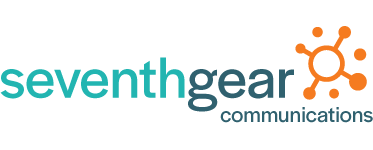Common Content Creation Obstacles and How To Tackle Them
Writer’s block, creeping deadlines, keeping yourself focused, and lack of creativity. All problems we have probably encountered in our careers can make us feel suffocated. Identifying and overcoming these obstacles can seem like a feat for a content creation and marketing team or even as a solo creative professional. Addressing common obstacles at the beginning of a new project and having clear project management can help set you up for success and help you stay motivated.
Time Management
Time, or lack thereof, is often a large stressor when it comes to producing high-quality content. If it’s a short turnaround time or procrastination has gotten the better of you, try self-imposing deadlines. Completing smaller, more manageable tasks on time can keep you on track and motivated. This could take the form of creating a shared calendar of tasks and deadlines between teammates or simply having a daily check-in with everyone.
Being realistic with personal or team timelines is also essential. You know your work style best. If you tend to get distracted, account for those distractions at the beginning of the project. Completing tasks or a project earlier than expected is better than feeling overwhelmed and asking for last-minute extensions.
Staying Creative
Staying creative and avoiding writer’s block can be one of the most difficult parts of a creative or marketing-related job. Taking new or recycled information and spinning it in an attention-grabbing way risks coming off as formulaic and robotic (though if you maintain an authentic, on-brand voice and tone, recycling content can be an effective part of a larger content marketing strategy). 
Establishing themes, hyper-focusing on consumer needs, and keeping up with competitors are basic ways to reinvigorate content and keep the inspiration flowing. Constructing themes can be helpful for initial brainstorming sessions between collaborators or even by yourself. Refreshing existing themes and rebranding is also a good way to keep the creativity flowing.
Remember you are speaking to a curated audience! Listening to consumers’ needs shows direct insight into what kind of content resonates with them. A great example of this is Nike. Their brand is built for athletes and therefore provides products and services athletes desire. Their marketing and social media have curated a specific culture that athletes seek out. By tapping into what their audience wants to see, they are able to have different streams of creativity with their content.
While it is important to pay attention to what competitors do successfully, they can also show what is not effective or working with a similar audience. It can also be helpful to compare two or more competitors. Looking at branding, engagement, and image can show what is the most effective within your audience pool.
Working in a Silo
Challenges can inspire innovation but can sometimes leave us feeling frustrated and unsure of how to navigate them. Working in a silo presents one of the most common obstacles when working on a team of any kind. Silo mentality occurs when employees from different departments within an organization feel disconnected–leading to poor communication and suffering in cross-departmental relationships. Lack of unified leadership and failure to adapt to changing workplace culture can also lead to feeling out of touch with your counterparts.
If you are working on a creative or marketing team, it’s important to set up clear expectations for each member and communication from the beginning. Having these expectations enhances collaboration and fosters accountability amongst peers. A team can only be as successful as its least effective communicator.
 A few ways to combat the silo mentality is having daily or even weekly check-ins with your team and across departments. Allowing team members to speak about their progress gives others insight into their peers’ perspectives and can generate conversations on new ways to tackle issues. Additionally, having the option of remote work for your team gives members the opportunity to work when they feel inspired–rather than feeling like they are working to just check their responsibilities off of a list. If you are a team of one, try setting yourself up for obtainable goals that flow with your work style.
A few ways to combat the silo mentality is having daily or even weekly check-ins with your team and across departments. Allowing team members to speak about their progress gives others insight into their peers’ perspectives and can generate conversations on new ways to tackle issues. Additionally, having the option of remote work for your team gives members the opportunity to work when they feel inspired–rather than feeling like they are working to just check their responsibilities off of a list. If you are a team of one, try setting yourself up for obtainable goals that flow with your work style.
Obtaining Leadership Buy-In
Leadership buy-in and support can also become an obstacle. Having this support increases employee engagement because it shows that leaders value their employees’ ideas. To do this, it’s important to emphasize common goals that align between the organization and the current project. All members are working towards a common mission and to have a successful end result and need to feel like their work is valued. Showing leadership exactly how they can contribute and where each team member fits into the bigger picture can encourage buy-in and help expand the scope of the developing project.
Highlighting one another’s strengths is also a great way for team members to feel committed and supported in their tasks. Because they know that their organization’s leaders and their peers have confidence in them, they feel more confident in their deliverables. Leadership buy-in also improves general work relationships because it provides insight to different perspectives. It can even encourage more effective collaboration on future projects.
Seventh Gear Communications can help introduce a content creation strategy for your website or help you organize and recycle your existing content. Most websites already have the content they need–sometimes it just needs a refresh. To learn more, reach out to us anytime!
Comments are closed.

